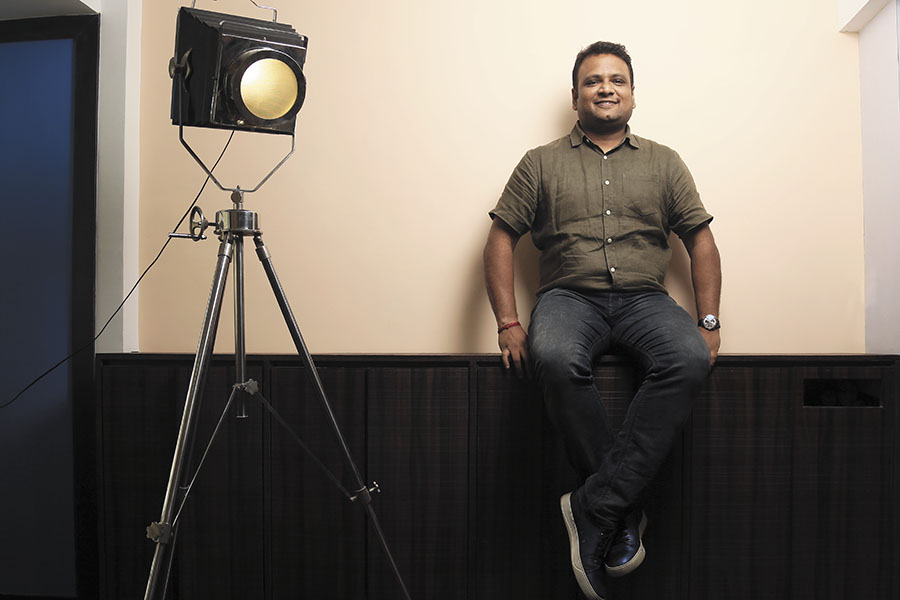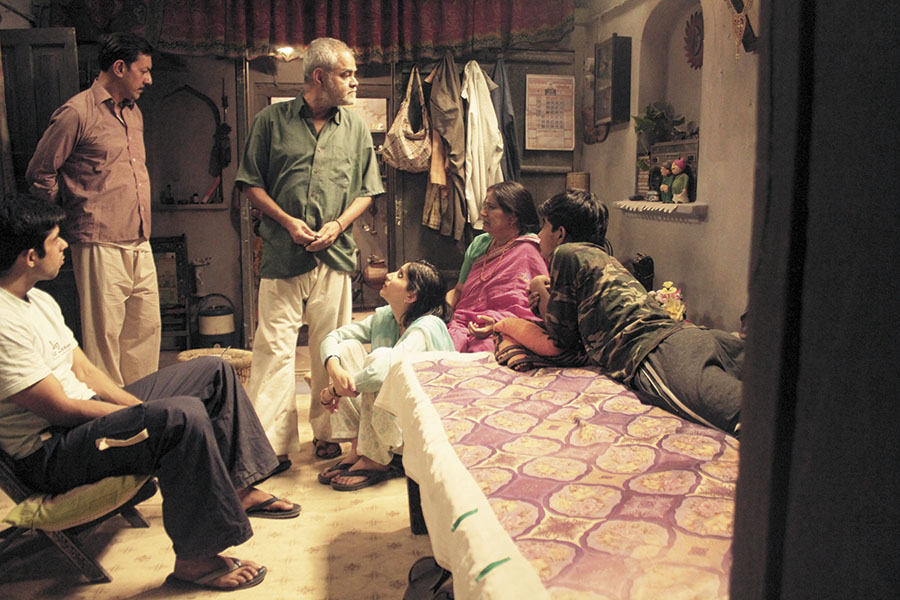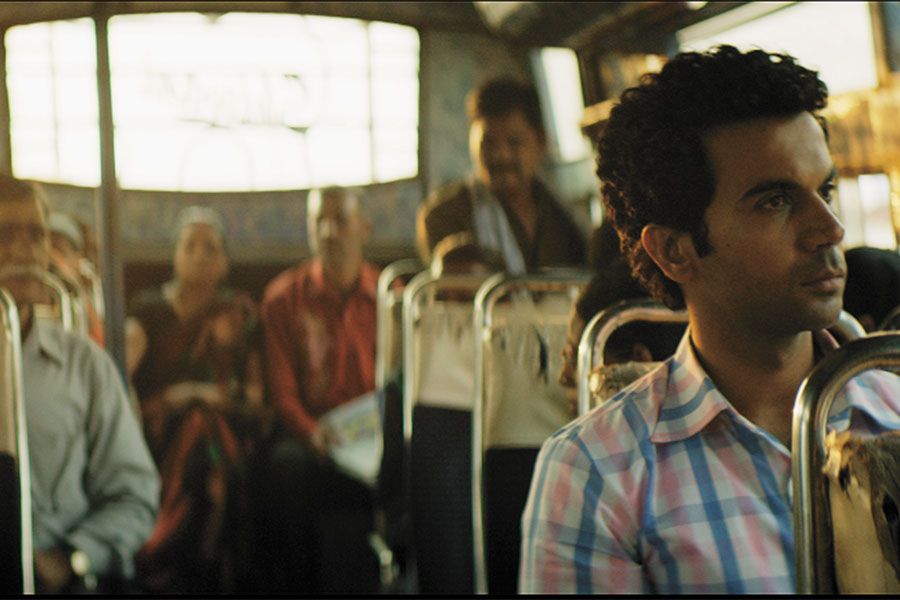
Manish Mundra: The screen saviour
By backing quality content, Mundra has emerged as indie cinema's ray of hope, while he heads a petrochemicals company in Nigeria
 Image: Joshua Navalkar
Image: Joshua Navalkar
The Tuesday after Ankhon Dekhi released in India in March 2014, the film’s lead Sanjai Mishra, co-actor, writer and director Rajat Kapoor, and producer Manish Mundra went for the 10.45 pm show at PVR, Juhu, in suburban Mumbai. Made on a budget of ₹7 crore, the movie was being screened at the multiplex along with the acclaimed Kangana Ranaut-starrer Queen and the bold Ragini MMS 2. “Ours was the most expensive ticket of the three, but in no time, the show was houseful,” claims Mishra. The trio then sat on the steps inside the theatre to gauge the audience reaction. At the end of the film, says Mishra, people clapped in unison, following which Mundra held his hand and said: “I can now tell my father that I put my money in the right place.”
The critically appreciated Ankhon Dekhi marked Mundra’s foray into the Indian film industry as an independent producer; Mundra is also the CEO (Africa) and MD of Indorama Eleme Petrochemicals in Nigeria, a company he joined in 2002.
Since then, he has backed movies like Masaan (2015), Waiting (2016), Umrika (2016), Dhanak (2016) and the soon-to-be-released Newton (September 22) and Kadvi Hawa (November 24) through his production house, Drishyam Films, that he founded in 2014.
And 2017, in particular, began on a high for Mundra: While Dhanak won the National Award for Best Children’s Film, Kadvi Hawa received a Special Mention at the National Film Awards this year. The 44-year-old is, naturally, thrilled with the laurels. “It [this honour] gives some sort of satisfaction, assures us that we are on the right track and motivates us to do more,” says Mundra.
It has been a remarkable ride for Mundra, who, as a child, sold fruit juices on the streets after school hours to help his family make ends meet. He was born in Deoghar, Jharkhand, to a Marwari family that traditionally traded in tobacco and tendu leaves. However, the family fell upon tough times after Mundra Senior suffered financial losses, and had to take on a lot of debt. That was when nine-year-old Mundra, the third of five siblings, took on the responsibility of helping his mother run the house by hawking on the streets.
After clearing his ICSE from St Francis School in Deoghar, he realised the importance of education in one’s professional journey. So, he relocated to his grandfather’s house in Jodhpur and pursued his graduation in commerce, and subsequently did his MBA from the University of Jodhpur. Around this time, his entrepreneurial ambitions began taking root, but he was aware that sufficient capital was integral to running a business. He entertained thoughts of taking up a salaried job and saving money to fulfil his dreams.
A campus placement with the Aditya Birla Group brought him to Mumbai and led to successful stints with various group companies in different parts of the country. Thereafter, he left India to join the Lohia-promoted Indorama in Nigeria and that’s when, he believes, his growth story really began.

Nestled far away from his motherland, in another continent, it was an innocuous tweet late in 2011 from filmmaker Rajat Kapoor that brought Mundra into the movie business. Frustrated at not finding a financier for Ankhon Dekhi, Kapoor wrote that he would do a new play instead. That’s when Mundra, who had been following a few people from Bollywood on the microblogging site, wrote to the director immediately, saying he’s willing to invest in the film. “I told him this was not the platform to discuss this and shared my phone number,” recalls Kapoor. “When he told me he was calling from Nigeria, I thought it was some sort of a scam,” he laughs.
Mundra came down to Mumbai a month later and read the script before coming on board as producer. “That’s when I realised that magic happens,” exclaims Kapoor. “He had a vision, and it wasn’t just about one film. He had a bigger plan to make movies.”
That, however, may not be entirely true if one believes Mundra’s reasons for associating himself with Ankhon Dekhi. “It was just to tick another item off on my bucket list,” he says. “There was no plan to continue making films.”
Though Ankhon Dekhi did not recover its cost, the praise it garnered extended Mundra’s innings in the film world. “The film did not do well commercially, but everyone remembers it. I took it as a challenge to make good cinema and also have the capability to convert such films into box office successes,” he says.
The ensuing success, in India and abroad, of low-budget, story-oriented films like Masaan—Mundra’s most successful film to date although Waiting also broke even—led to him being acknowledged as one of independent cinema’s leading lights. He was named as American entertainment magazine Variety’s ‘10 Producers to Watch for 2017’. Though happy with such recognition, Mundra does not consider himself a messiah for small filmmakers. “It’s not one person who can drive everything. It’s [filmmaking] so big and deep. You just play a small part in the whole set of things. It has to be a wave comprising a lot of people and effort. I am passionate about good movies and supporting them, that’s it,” he says, sitting in his office in Andheri, Mumbai, located opposite the office of Yash Raj Films and adjacent to Balaji Telefilms. Its location is, in a way, a metaphor for the space Mundra has created for himself amid big banners flush with funds and international studios armed with marketing and distribution might.

But Mundra has the requisite assets: His eye for good scripts, and instinct. “Picture dil se banti hai, paise se nahi. Yeh saabit kiya [movies are made from the heart, not with money. He has proved it],” says Mishra. “He is not a businessman when it comes to movies; he is promoting good cinema with good intentions.”
Director Amit Masurkar, whose film Newton, starring Rajkummar Rao, won the Art Cinema award in the Forum section at the 2017 Berlin Film Festival, says Mundra green-lighted the film, which is about a day in the life of an election official in Chhattisgarh, during a 30-minute drive from Sahar Hotel near the Mumbai airport to the business district of Bandra-Kurla Complex. “We were on our way to announce the films for the 2015 MAMI Festival. I gave him a basic narrative in the car, and he said yes by the time we reached the venue,” says Masurkar. “There is no red tape in Drishyam. Manish has a clear vision about what he wants. If he feels connected with a story and he likes you as a person, he is on, and then he backs you completely.”
It is, therefore, not surprising that Mundra agreed to produce Kadvi Hawa—a film on climate change— after a one-line narration by director Nila Madhab Panda at a friend’s place.
Among Mundra’s plus points as a producer, adds Masurkar, is that he has clarity on what he’s getting into, and the fact that he never imposes himself. “He trusts your vision completely. Even when he’s suggesting creative changes, he does not force you to implement them,” he says. Kapoor says Mundra rarely came to the sets of Ankhon Dekhi. “He was on a learning curve then. Now, of course, he has evolved; he knows a lot more about films and is initiating his own projects,” says Kapoor.
Panda calls Mundra an “artistic individual” and a producer who protects not only the director but also the entire team. “He plays a father’s role on the sets. He has artistic sense, is a sensitive human being and a good producer. He has a great understanding of art and understands the importance of people,” he says.
This uncomplicated work ethic comes from his simplicity as a person. Mundra says he converts a story into a film once he likes it. “Film-making itself is an incentive. We don’t work with big stars because we are still small, and I don’t think stars would like to work with us. But we focus on content and quality,” he says. “I am not making films from the point of view of a business; the objective is tilted towards [producing] good quality content.”
Panda agrees, pointing out that Mundra takes low risks by sticking to his budget and, in the process, creates interesting projects.
It is this quest for unique content that prompted Mundra to launch a month-long online competition called Quest For Stories (which received over 100 entries) earlier this year. It invited writers to submit their concepts, from which five stories would be developed into film scripts. The winner has been promised a fee of up to ₹5 lakh for the rights of the story and a credit for the film, if and when it goes into production. “I have taken a tougher route. I want my films to be the star, the content to be the star,” says Mundra.
Drishyam also ventured into short films recently with Paroksh (Invisible), a 12-minute horror suspense drama, and The Affair, a six-minute tale about a couple yearning for intimate moments in Mumbai, which were released on the YouTube channel of the production house. “The digital revolution was going to happen and we were prepared for it,” says Mundra.
This ability to adapt and keep up with the times doesn’t surprise Mundra’s peers. “Manish is a phenomenally inspired and enlightened human being,” says Kapoor. “He has his own way of doing things and has now produced eight or nine films in four years against all odds.”
Mishra, who plays the lead in Kadvi Hawa, concurs. “He’s showing the studios that he can take cinema to another level. That an outsider can come here and produce good films,” he says. Panda describes Mundra as a true producer who has established that independent cinema is important. “I’ve seen him not look at money [when he’s making a movie],” says Panda, whose film Kadvi Hawa was made on a budget of ₹4 crore.
Between heading the fertilisers and petrochemicals business in Nigeria, and shuttling to Mumbai every now and then to quench his thirst for quality cinema, Mundra makes sure he finds time for his interests. Money does not excite him anymore, he says, because he knows he won’t be able to spend what he’s earned in his lifetime. It’s the small things like exploring new places, indulging in photography, painting and writing poetry that give him a high. He’s publishing a book of poems this year and is working on two other tomes on the themes of ‘how to become a millionaire’ and ‘how Africa matters to India’.
“There is a kalakar [artist] in him; he composes music and has even written a song for Kadvi Hawa… he’s a very sensitive man,” says Mishra, whose partnership with Mundra has resulted in some of their best works. The hardships that he encountered early in his life have shaped his thinking in such a way that he does not have lofty ambitions anymore. “I am aware that everything is temporary. Luxury cars or big bungalows do not excite me. Nice stories do,” says Mundra.
And though he has made a mark in his short stint in the film world thus far, he now wants to be known as a commercially successful producer just to remove the “social stigma”—of making good films that don’t make money—attached to Drishyam. “We are now breaking even. Making money in films is more important from the point of view of society and my team. It doesn’t matter to me. But my team should be able to enjoy the rewards apart from their salaries,” he says. But, he adds, “I certainly won’t do brainless work.”
Having steered clear of superstars till now, will he work with Amitabh Bachchan, his favourite actor, in the future? “I would love to work with him. I also want to make a film with Shah Rukh Khan. I had promised my 14-year-old daughter [he also has a nine-year-old son] that I’ll get her to meet him. So, I’ll make a film with Shah Rukh,” he says.
May be, at the end of that movie, she’ll hold Mundra’s hand and say: “My father put his money in the right place.”
(This story appears in the 15 September, 2017 issue of Forbes India. To visit our Archives, click here.)















